
Bread can rise even more – The Accidental Recipe
Sunday 22nd May 2011, Recipe 20110522
How to make bread rise more – an introduction
I have been trying to figure out how to make the bread rise a lot more as a way to soften the bread. There are several ways to make the bread softer.
1. Add a bread softener. This is my last option as I wanted to adjust the bread recipe to change the properties of the bread.
2. Add more oil or fats (butter) to lower the viscosity of the dough or adding corn starch to thicken the dough. But corn starch can create very large cavities in the bread.
3. Add more sugar to try to block the gluten formation. This suggestion opens up other options.
4. We could even ‘cheat’ a little by adding 1% baking powder into the recipe.
Photos of how to make bread rise more
At the moment I am trying to get the bread to rise a lot more by increasing the gas formation in the dough and allowing the gas bubbles in the dough to be larger. I am doing this by reducing the fermentation time and increasing the proofing time.
While I was investigating this, I noticed a second ‘problem’, or what may become a problem in the future. With the 100% water recipes the sponge should form a shape like a round ball if the sponge was not over mixed but when I changed the bread flour to a different brand, the sponge would be almost like a batter. I noticed this in the orange cherry recipes and then realised it was occurring in the wholemeal recipes too. See pictures below.
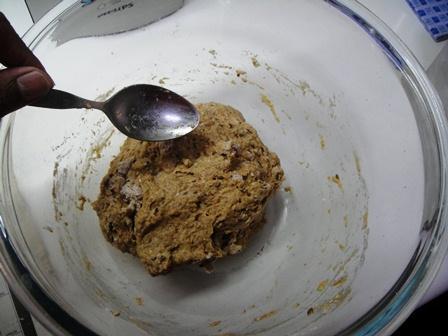
This dough seems to be able to absorb water and stay ‘dry’. Let’s call this brand of flour Brand A or ‘Absorbent Flour’.
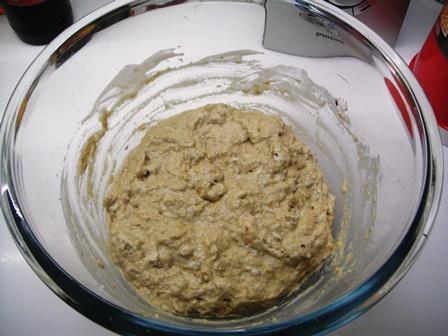
This dough seems to be able to absorb water and seems to turn ‘watery’. Let’s call this brand of flour Brand X or ‘Wet Dough Flour’.
I do not know whether there is less protein in Brand X, or the flour particle structure is sufficiently different that it is difficult for it to absorb water or if the wheat has higher water content or if it was milled in a higher humidity area so it does contain more water. I do not know whether Brand X was adulterated bread flour but it is 53% cheaper than Bran A! I have to do more investigations into this. Will let you know soon.
And the recipe is as follows.
| Item | Ingredients | Percentage | Weight | Weight | |
| (%) | (g) | oz. | |||
| Sponge | |||||
| 1 | Bread Flour | 100 | 300 | 10.56 | |
| 2 | Instant Dry Yeast | 1 | 3 | 0.11 | |
| 3 | Vitamin C | 1 | 3 | 0.11 | |
| 4 | Sugar | 10 | 30 | 1.06 | |
| 5 | Molasses | 7 | 21 | 0.74 | |
| 6 | Water, Cold | 100 | 300 | 10.56 | |
| Additives | |||||
| 7 | Salt | 2 | 6 | 0.21 | |
| 8 | Bran | 10 | 30 | 1.06 | |
| 9 | Wheat Germ | 4 | 12 | 0.42 | |
| 10 | Flax seeds | 5 | 15 | 0.53 | |
| 11 | Sesame seeds | 5 | 15 | 0.53 | |
You will notice that I had introduced Vitamin C. Vitamin C is the bread improver in almost all bread improvers you buy from the shops.
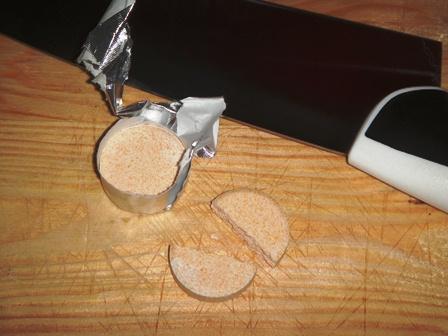
I broke a tablet of Effervescent C which is 5 grams into half and placed the half tablet in 300 grams of cold water. Then I added the molasses into the cold water. Since, Malaysia is a hot country we use cold water but if you are in a cold country you may want to use warm water. That is water that is below 30C (86F) – you do not want to kill the yeast. Notice that I have stripped the recipe of all oils. Oils will lower the viscosity of the dough and I didn’t want their influence in this experiment. One thing I did notice was that Butter, Extra Virgin Olive Oil and Virgin Coconut Oil, in small doses introduce wonderful additional flavours to the bread.
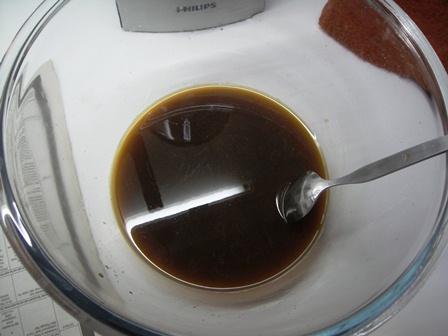
Cold water mixed with molasses and vitamin C and sugar.
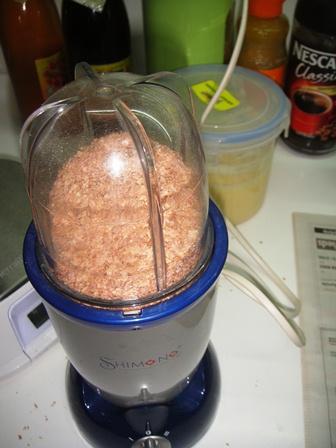
This time around I decided to grind the bran flakes into a powder as one of my friends did ask me what those flakes were. I could not notice the bran flakes in the bread but others could!
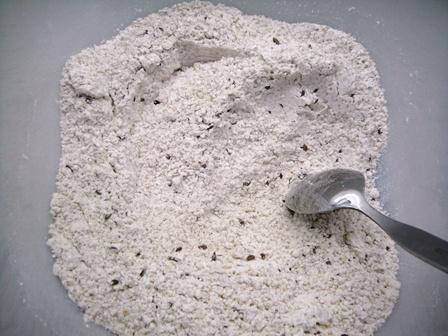
Mix all the dry ingredients together so that they are uniformly dispersed within the flour.

You will noticed I have gone back to Brand A, the Absorbent Flour brand. I had mixed everything together as in the ‘Strait Dough’ method as I wanted the fermentation and the proofing to occur in the baking tin to get as much rise out of the dough as possible before baking.
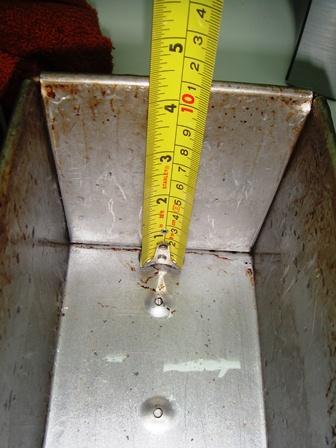
I was trying to find out exactly how much of a rise I would get out of this dough.
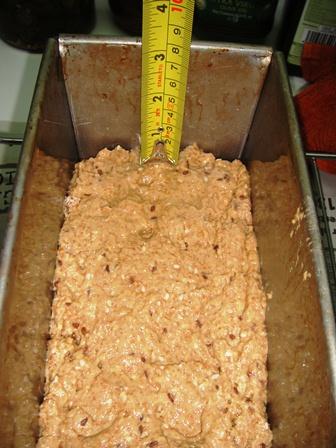
You can see how much of the tin the dough occupies. It was while doing this I noticed something else.
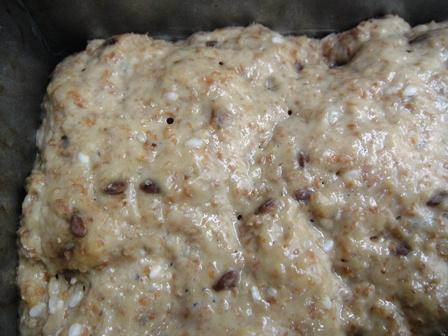
The dough colour changes because sometimes I use a flash and sometimes I don’t. Here the dough looks a little more white than brown in the above picture. Did you notice what I saw?
There are holes in the dough that allow the gases produced by the yeast to escape and thus blocking further rise of the dough. This bread rises by approximately twice its height, may be 2.5 times it’s original height but not more than that. I must apologise for not taking any more pictures after this as I was too absorbed in fixing this problem and I forgot to take more pictures. Just for this blog, I dug up older pictures to check on the baked bread.
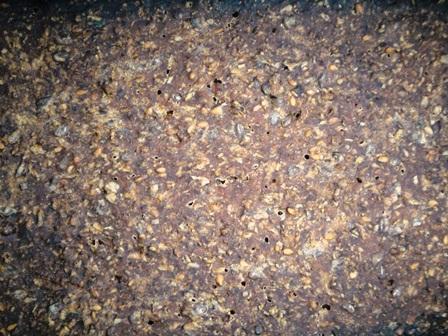
In the close up photos, you can see that there were many holes even in the previous baked bread samples. Hence this is the main cause of the bread not rising sufficiently high to ‘thin out’ the bread and make it softer. I think this is due to the high water content in the dough, which is 100% water content. This high water content lowers the viscosity of the dough allowing gases to escape. Hence results in heavy bread or dense bread which I prefer unlike the airy fairy bread they sell in the shops. I will get the bread to rise a lot more in future recipes.
Checkout my fast rising fast proofing bread”The Batter and Dough Method”.
This article how to make yeast bread rise more was researched and written by Peter Achutha
Leave a Reply